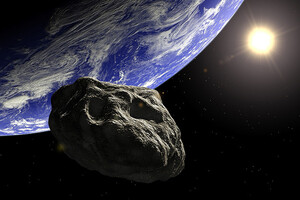It was assumed that the asteroid will hit the planet in 2052.

Scientists conducted a large observation campaign in which they took participation of the most powerful telescopes in the world to find out whether the asteroid, which was called “the most dangerous in history”, will hit the Earth. These observations showed that the space rock will still pass by our planet, according to Space.com.
The European Space Agency has called the asteroid, designated 2021 QM1, “the most dangerous asteroid known to mankind.” Numerous observations and recalculations of its orbit showed that it should fall to Earth in April 2052.
Read also: The collision of the DART device with an asteroid satellite may have unexpected consequences
But the observations made with the help of the European Southern Observatory's (ESO) Very Large Telescope, one of the most powerful radio telescopes in the world, helped prevent a collision. The telescope watched the “space rock” as it moved, before it became “the dimmest asteroid ever observed.”
Several telescopes observed 2021 QM1 shortly after it was discovered by the Mount Lemmon Observatory in Tucson, Arizona. With each observation, it became more and more obvious that in three decades the asteroid would come “dangerously close to Earth.” The fall of a celestial body with a diameter of about 48 meters would cause damage equivalent to the explosion of a nuclear bomb over Hiroshima.
“These early observations gave us more information about the trajectory of the asteroid, which we then projected for the future. We could see its future paths around the Sun, and in 2052 it could come dangerously close to Earth. The more the asteroid was observed, the higher the risk,” said the head of the European Space Agency's planetary protection department, Richard Moissl.
When the risk of collision was judged to be incredibly high, the asteroid briefly disappeared from view in bright sunlight as its orbit approached the star. Scientists understood that by the time the “space rock” reappeared in the field of view, it would be too dim to be seen with most telescopes. So they turned to a very large telescope to conduct research. But it was not an easy task for him either.
“We had a short time to discover our dangerous asteroid. To make matters worse, it passed through an area of the sky where the Milky Way was just behind it. Our small, faint, receding asteroid should have been found against a background of thousands of stars. These were the most difficult observations of asteroids we have ever made,” said ESO astronomer Olivier Hainault.
The telescope was able to detect 2021 QM1 when its magnitude was 27. By comparison, the Sun's magnitude, the brightest object in our sky, is minus 27 (the magnitude scale inverts the actual brightness of objects; stars in the sky have a magnitude of about 0).
These observations turned out to be enough to find out , that in 2052 the asteroid will not collide with the Earth.




